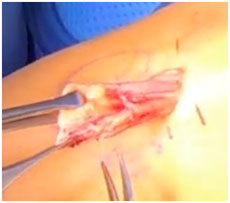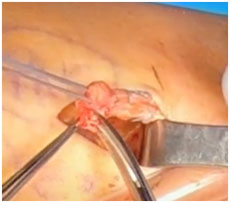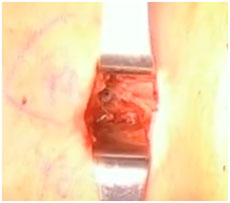Distal Biceps Tendon Repair

The biceps muscle has a tendon to attach the muscle to the bone at the elbow, called the “distal” biceps tendon. In the elbow, the biceps tendon attaches to the radius bone. This muscle is important for bending the elbow, but it is even more important for rotating the forearm from the palm down to the palm up position. It is one of the only muscles that performs this motion. This motion is important for normal arm function in daily activities.

The distal biceps tendon can be torn from its attachment to the bone by injuries that involve heavy lifting or a sudden resisted straightening of the elbow. This injury creates pain and bruising in the front of the arm. After the tendon tears, the biceps muscle retracts upwards, changing the contour of the arm. This is frequently called the “popeye” arm. Because the tendon can be felt beneath the skin, usually Dr. Chalmers can make the diagnosis of a distal biceps tendon tear by examining the arm. Infrequently, an MRI may be necessary to confirm the diagnosis.

When this tendon tear occurs, Dr. Chalmers almost always recommends that the tendon be repaired to restore arm strength. Biceps tendon repair is a one hour, outpatient surgery performed through a one-inch incision on the forearm. Dr. Chalmers repairs the tendon using a titanium “button” that restores the tendon to the bone and holds it there were the tendon heals to the bone. After surgery, the elbow must be immobilized for two weeks and then elbow motion can begin. No lifting beyond 2-3 pounds is allowed for six weeks while the tendon heals.
Although it is not an emergency, repair usually should be performed as soon as possible after the tendon tear occurs. After the tear occurs, the biceps muscle begins to decrease in size and to become scarred in an abnormal retracted position, which can make repair and recovery more difficult. After six weeks, the muscle and tendon can become so scarred that the tendon can no longer be pulled to the bone and a cadaver tendon must be used to bridge the gap.
Click here to download the PDF.
You will need the Adobe Reader to view and print these documents 
